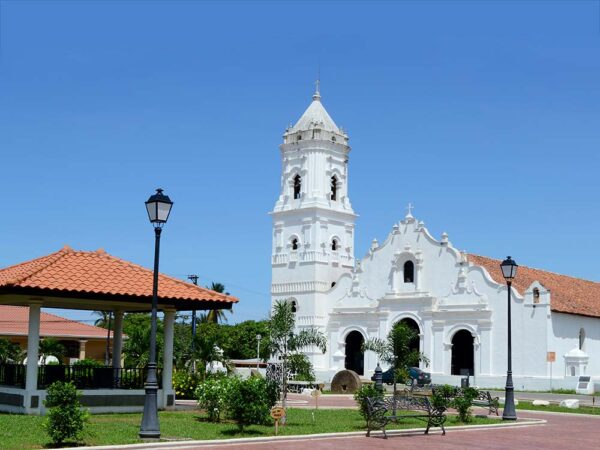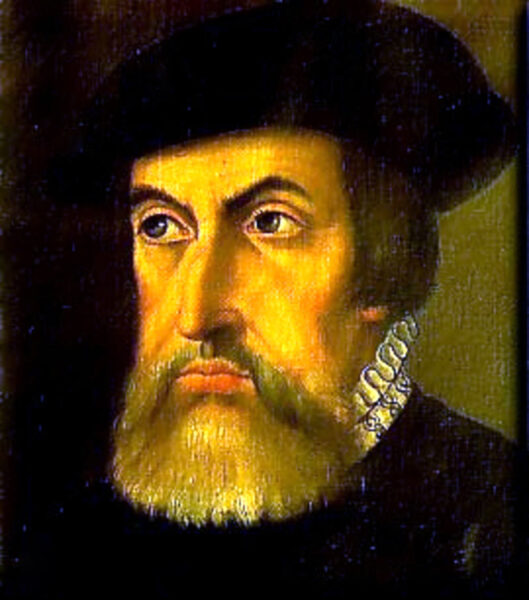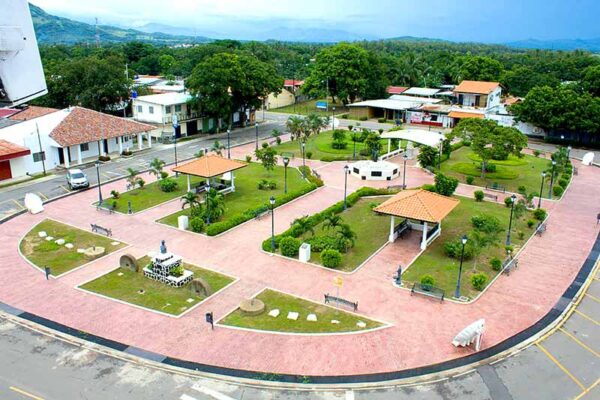Natá, more than 500 years of history
Panama occupies a prominent place in the urban history of the Americas. Our region was the first mainland territory to […]
Panama occupies a prominent place in the urban history of the Americas. Our region was the first mainland territory to house the first colonial cities in the American continent. Portobelo, Nombre de Dios, Belen, Santa Maria La Antigua, Panama and Natá are examples of these cities founded in the American continent. Natá stands out with a history yet to be written, and whose half millennium is to be celebrated next year.
The beginning
It is the second city founded in the American Pacific. On May 20, 1522, Pedrarias Dávila founded Natá to link the advance towards Central America, to serve as a breadbasket for the terminal cities of the Isthmus and to be the spearhead for the conquest of Veraguas.

The Minor Basilica
The church is the monumental Hispanic legacy of Natá. The church of Natá was consecrated to the Apostle Santiago and has the merit of being the oldest church in America, still in use. The church building was declared a National Historic Monument by Law 68 of 1941. Today it is one of the emblematic buildings of the city along with the chapel of San Juan de Dios. The two buildings and the urban layout is what remain as part of the Hispanic heritage; however, Natá is more than a church.
American Urbanism
Urban researchers identify Panama la Vieja (1519) and Natá (1522) as the two main settlements founded by Pedrarias in the Isthmus. Eduardo Tejeira Davis tells us that the study of both cities can “contribute significantly to elucidate the evolutionary process of Hispano-American urbanism during its first critical years”. The author states that Natá, before cities like Bogota and Lima, “tested a revolutionary grid layout with large blocks”. Natá is important as an antecedent of the urbanizing enterprise in Hispanic America, being the layout and the size of the blocks one of the most relevant (Tejeira, 1996).
In the context of power
Since its foundation, it became a strategic point for the conquest of the Panamanian Pacific region. It was a breadbasket for the colony and at the time of contact, it had a large indigenous population with the capacity to maintain and sustain its food and political security. During the period of independence from Spain, people like Francisco Gómez Miró catalyzed the cry for independence in Azuero, motivating like wildfire, the movement towards the capital. Luis Carlos Chanis, from Natá, tells us that “the celebration of the 500 years of Natá offers the opportunity to highlight all the historical and cultural past of the city. The community is working for the rescue of all the material and immaterial cultural heritage for this celebration”.
What happened to the Pedrarias Natá?
After nine years, it was destroyed by the natives in 1531. It was later rebuilt at the initiative of the bishop of Panama in 1532. The native population declined rapidly and most of it migrated to Azuero and Veraguas. Those who chose the first, founded La Villa de Los Santos, while others decided to go to the conquest of Veraguas.

Natá retained its status as a city throughout the colonial period but its economic base was always weak and, over time, nearby Penonomé replaced it as the main urban center.
Did Natá exist more than 500 years ago?
The site of Natá had a large indigenous population before the founding of the Hispanic site. Gaspar de Espinoza, conqueror and chronicler, was impressed by the amount of housing, population and food in these territories: “What he had seen in this area, he had not found anywhere in the New World”.
Gonzalo de Badajoz describes it in 1515 as a settlement where “there were so many “bohíos” that I believe there was no one who was not frightened and afraid of seeing such a large population”. Oviedo, another chronicler, made a sketch included in his famous Historia General y Natural de las Indias, which shows round houses with high conical roofs. (Tejeira, 1996).
Carlos Fitzgerald, Panamanian archaeologist, says that to understand the deep history of Natá, it is necessary to remember that the first inhabitants of the Isthmus of Panama arrived as migrants 14,000 years ago. The processes of human occupation were continuous until the arrival of the conquerors. Since the first millennium B.C., there were agricultural villages, pottery was used and gold was worked in a tradition that stands out for its sophisticated craftsmanship, a material culture that is evidenced in lavish burials in sites such as El Caño and Sitio Conte. Natá arose after 1,000 AD.
The 500th Anniversary Celebration
There is expectation among the Natá community for the celebration of the 500th anniversary. Maida Martínez, president of the Panama Chapter of the Celebration Committee, emphasizes that the ephemeris must remember the indigenous Natá, a little known aspect of the history.
The evangelizing enterprise has weight, however, Natá needs to empower its development and indigenous history. “We are about to inaugurate the Museum in the Chapel of San Juan de Dios in Natá. We plan to open it next November,” says Maida Martínez. There are great expectations of financial and institutional support from the Executive and MiCultura. This is necessary in order to have a wide and permanent exhibition”, she concludes.

Natá today
The half century of foundation of the Hispanic Natá is an open door to recognize the great ancestral legacy of its first inhabitants. This date is an opportunity to know and value the rich heritage of Natá. This pre-Hispanic knowledge is a subject that deserves more extensive comments, not without mentioning the need for the development of scientific and archaeological research that provides information to understand this dimension, and that extends beyond its limits, to understand the Natá and the extraordinary events that have to do with our local and universal history.